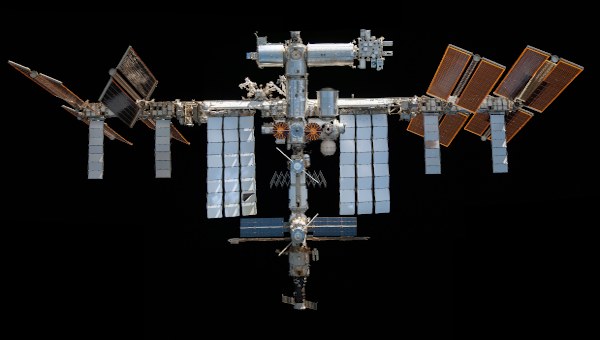The Ukraine War Is Accelerating the New Space Race
Shortly after Russia was sanctioned for invading Ukraine in late February, Russia’s state-run space agency, Roscosmos, announced that it was officially suspending the US from an upcoming Venus exploration mission. Weeks later, on March 17, the European Space Agency (ESA) announced the suspension of a joint mission to Mars with Roscosmos, and further said that it would not be taking part in upcoming Roscosmos missions to the moon.
These decisions have naturally generated concern across the space industry and political landscape. For decades, Russian and Western countries have collaborated in space despite flare-ups in tensions on Earth. In 1975, the US Apollo capsule linked up with the Soviet Soyuz spacecraft briefly as a symbol of cooperation amid the Cold War. In 1995, the US space shuttle Atlantis docked with the Russian space station Mir.
And in 1998, the International Space Station (ISS) was launched, featuring a Russian Orbital Segment (ROS) and a United States Orbital Segment (USOS), the latter being operated by NASA, the ESA, the Japan Aerospace Exploration Agency (JAXA), and the Canadian Space Agency (CSA).

Sanctions Hurt Cooperation
Sustained cooperation on the ISS has been a notable exception to the growing tensions between Russia and the Western states over the last decade. But in April, Dmitry Rogozin, head of Roscosmos, declared that Russia would end cooperation on the ISS, as well as other joint projects, if sanctions against Russia were not lifted. While such threats have been issued before, notably after Russia’s 2014 annexation of Crimea, the heightened confrontation between Russia and the West since the start of the Ukrainian invasion has reinforced this possibility.
NASA, meanwhile, chose to downplay Rogozin’s claims and stated that it will continue to operate the ISS until at least 2030. But Roscosmos has previously stated that it intends to develop its own space station by 2025, and has also revealed plans for a potential manned mission to the moon. Russia’s GLONASS satellite navigation system, which achieved global coverage in 2011, has also become a viable rival to the United States’ GPS system. These developments show the Kremlin’s growing commitment to pursuing its own interests in space without partnering with Western states.
In comparison, Roscosmos has increased its collaboration with the China National Space Administration (CNSA), particularly after the first wave of Western sanctions in 2014. In 2021, China and Russia announced plans to build a lunar research station, a direct rival to NASA’s Gateway project, which will be coordinated with the space agencies from Europe, Japan, and Canada.
China has already created its own space station, the Tiangong Space Station, which was launched in 2021. While far smaller than the ISS, China’s space agency has six more launches planned this year to complete the installation. China also sent a rover to the far side of the moon in 2019, as well as to Mars in 2021, and has announced plans for its own manned moon mission this decade.
While the space programs of some countries in the Global South, such as India, Brazil, Indonesia, and Iran, are certainly less impressive, their development demonstrates the growing accessibility to space, which has long been dominated by Russia, China, and Western states. More than 70 countries now have space agencies, while 14 are capable of orbital launch.
For these countries, success in space in recent years has often come from collaborating with existing space powers. In 2005, Iran’s first satellite was built and launched in Russia, while in 2008, China, Iran, and Thailand launched a joint research satellite on a Chinese rocket. Technology sharing, domestic innovation, and decreasing costs have also allowed more countries to compete in space. India made history in 2013 after it sent its own orbiter to Mars, notably on a smaller budget than the space movie “Gravity,” which came out the same year.
The growing number of countries active in Earth’s orbit and beyond have also revitalized fears of the possibility of the militarization of space. So far, only Russia, China, the US, and India have successfully demonstrated anti-satellite weapons. Other countries, however, including Iran and Israel, are believed to either be developing or already have similar capabilities.
Of course, Western countries remain far ahead technologically than any other state or group of states. NASA’s Artemis 1 mission, for example, aims to place humans on the moon again by 2025, while three NASA rovers are currently active on Mars. NASA’s unmanned X-37B program – which began in 1999, was transferred to the US military in 2004, and is now being run by the Air Force’s Rapid Capabilities Office – has so far conducted four missions, while collaborative projects with the ESA have further underlined Western dominance in space.
But a growing phenomenon in space is the role of private companies. They have been involved in many of NASA’s and the ESA’s high-profile projects, including Boeing’s involvement in the X-37B project. Largely based in the US and the UK, these companies have helped reduce costs and have increased opportunities for government space agencies, and they will be essential for exploiting the vast resources on the moon, asteroids, and other celestial bodies.
Though hundreds of space-related companies exist, a handful have stood out as pioneers of the modern space age. Blue Origin and Virgin Galactic, owned by entrepreneurs Jeff Bezos and Richard Branson respectively, both made history in 2021 after conducting their own manned space flights. Blue Origin, defense contractor Lockheed Martin, and other corporations have also signed contracts to create private space stations in the future.
The most notable private company operating in space, however, is SpaceX, which is owned by entrepreneur Elon Musk. In recent years, the company has helped reduce the United States’ dependency on Russian Soyuz rockets to bring astronauts and deliveries to the ISS following the termination of the NASA program as a consequence of the Ukraine war.
SpaceX has launched more than 2,000 Starlink satellites into space, with plans to launch more than 12,000 by 2026. Most will form part of the Starlink project that aims to provide internet access to populations around the world.
Ukrainian Vice Prime Minister Mykhailo Fedorov tweeted at Elon Musk in February to use the Starlink project to bring internet to Ukraine after some services were disrupted by the Russian invasion. Within days, Starlink was active across the country, and in early May, Ukrainian officials stated that 150,000 Ukrainians were using the service daily.
The use of Starlink satellites was no doubt seen in Moscow as a direct challenge to the Kremlin. While Russia is currently unlikely to attack the network, it has raised questions as to how future confrontations between private companies and countries in space might play out. The growing use of private military companies on Earth by both states and the private sector could inspire similar moves to protect government and private assets in space.
The growing profile of private space-related companies threatens to upend the rules of regulations regarding space, most of which were written decades ago. This includes the 1967 Outer Space Treaty, which through Article VI established that countries have the legal authority to regulate space and not international bodies, with private companies not yet having started space exploration when the treaty was finalized. The Artemis Accords, a modern US-sponsored agreement to regulate space created in 2020, has so far only been signed by 16 countries.
Nonetheless, the increasingly competitive space industry has already demonstrated that even smaller countries can play a large role in it. Overseeing the development of technologies and tempering the weaponization of space, by both countries and companies, should become a priority globally to help ensure that growing competition in space does not lead to avoidable and destructive consequences on Earth. •
This article was produced by Globetrotter.





